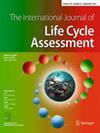从生命周期评估角度看沿海水域漂浮海洋垃圾的区域管理方案
IF 5.4
3区 环境科学与生态学
Q2 ENGINEERING, ENVIRONMENTAL
引用次数: 0
摘要
尽管越来越多的出版物关注海洋塑料垃圾的管理,但大多数研究都是从上游的角度进行的,重点关注海洋垃圾积累的来源和途径,以及防止塑料进入环境的行动。因此,本文的目的是研究海洋垃圾的废物管理技术组合,以便在区域层面上为环境影响热点的决策提供信息。方法北海德国湾的一项研究确定了适用于收集和处理漂浮海洋垃圾的现有技术,包括塑料回收、机械生物处理(MBT)和填埋。该区域报告的海洋垃圾组成的处理数据用于为旨在评估不同部分的废物管理战略计划(WMSP)建模提供信息。因此,收集的漂浮海洋垃圾被分成废弃渔具和混合海洋垃圾,分别送往回收厂生产塑料颗粒和MBT厂回收金属和发电。采用生命周期评估方法评估污水处理计划的环境影响,并与普遍采用的废物焚化方案进行比较。结果和讨论正如部分预期的那样,LCA结果显示,在焚烧方案的所有影响类别中,环境绩效都更高。特别是,WMSP对全球变暖潜能值(GWP)的贡献比焚烧方案少10多个数量级。然而,与WMSP有关的结果的细分表明,对环境影响的最大贡献归因于由废弃衍生燃料发电和热电联产电厂的排放,以及电力和柴油消耗。贡献最低的是回收工厂。敏感性分析显示,如果DFG等塑料碎片被转移到回收利用,则对全球变暖潜能值的贡献很低,而MBT工厂的高效金属和能源回收则改善了与毒性相关的类别。结论本研究结果表明,考虑到特定区域堆积的海洋垃圾的组成和性质,单一的处理方法是不够的,而应设计不同的处理途径组合。然而,回收塑料垃圾和将有用的材料从废物转化为能源进行循环利用可以改善环境绩效。审查建议在未来的海洋垃圾wmsp中纳入增值处理方案,如塑料转化为燃料技术。本文章由计算机程序翻译,如有差异,请以英文原文为准。
Regional management options for floating marine litter in coastal waters from a life cycle assessment perspective
Abstract Purpose Despite the increasing number of publications focusing on the management of marine plastic debris, most research is carried out using an upstream perspective, focused on sources and pathways of marine litter accumulation, as well as actions to prevent plastics from entering the environment. The aim of this paper is therefore to investigate a combination of waste management technologies for marine litter in order to inform decision-making on environmental impact hotspots at regional level. Method A study of the North Sea German Bight identified existing technologies suitable for the collection and treatment of floating marine debris including, recycling of plastics, mechanical biological treatment (MBT), and landfilling. Processing data for reported marine litter compositions in the region are used to inform the modelling of a waste management strategic plan (WMSP) aimed at valorising various fractions. Hence, collected floating marine litter is separated into derelict fishing gear (DFG) and mixed marine litter (MML) which are sent respectively to a recycling plant for plastic granulates production and to an MBT plant for recovery of metals and electricity generation. Environmental impacts of the WMSP are evaluated using the Life Cycle Assessment methodology and compared with incineration considered as the prevalent waste scenario. Results and discussion As partly expected, the LCA results reveal higher environmental performance in all impact categories for the incineration scenario. In particular, the WMSP contributes to Global Warming Potential (GWP) more than 10 orders of magnitude less than the incineration scenario. However, the breakdown of results related to the WMSP indicates the highest contribution to environmental impacts attributed to electricity and heat generation from refused-derived fuel and emissions at the combined heat and power plant, as well as electricity and diesel consumption. Lowest contributions are attributed to the recycling plant. The sensitivity analysis revealed low contributions to GWP if plastic debris such as DFG is diverted to recycling while toxicity-related categories are improved by efficient metal and energy recovery at the MBT plant. Conclusion Findings of this study show that no single treatment method is enough rather a combination of different treatment pathways should be designed considering the composition and properties of accumulated marine litter in a specific area. However, recovering plastic litter and diverting useful materials from waste-to-energy to recycling improve the environmental performance. Reviews suggest inclusion of valorisation treatment options in future WMSPs of marine litter such as plastic-to-fuel technologies.
求助全文
通过发布文献求助,成功后即可免费获取论文全文。
去求助
来源期刊
CiteScore
10.60
自引率
10.40%
发文量
100
审稿时长
8-16 weeks
期刊介绍:
The International Journal of Life Cycle Assessment (Int J Life Cycle Assess) is the first journal devoted entirely to Life Cycle Assessment and closely related methods. LCA has become a recognized instrument to assess the ecological burdens and impacts throughout the consecutive and interlinked stages of a product system, from raw material acquisition or generation from natural resources, through production and use to final disposal. The Int J Life Cycle Assess is a forum for scientists developing LCA and LCM (Life Cycle Management); LCA and LCM practitioners; managers concerned with environmental aspects of products; governmental environmental agencies responsible for product quality; scientific and industrial societies involved in LCA development, and ecological institutions and bodies.

 求助内容:
求助内容: 应助结果提醒方式:
应助结果提醒方式:


